Abstract
Decomposition of natural populations of Lake Mendota phytoplankton dominated by blue-green algae (cyanobacteria) was monitored by using oxygen uptake and disappearance of chlorophyll, algal volume (fluorescence microscopy), particulate protein, particulate organic carbon, and photosynthetic ability (14CO2 up-take). In some experiments, decomposition of 14C-labeled axenic cultures of Anabaena sp. was also measured. In addition to decomposition, mineralization of inorganic nitrogen and phosphorus were followed in some experiments. Decomposition could be described as a first-order process, and the rate of decomposition was similar to that found by others using pure cultures of eucaryotic algae. Nitrogen and phosphorus never limited the decomposition process, even when the lake water was severely limited in soluble forms of these nutrients. This suggests that the bacteria responsible for decomposition can obtain all of their key nutrients for growth from the blue-green algal cells. Filtration of lake water through plankton netting that removed up to 90% of the algal biomass usually did not cause a similar decrease in oxygen demand, suggesting that most of the particulate organic matter used for respiration of the decomposing bacteria was in a small-particle fraction. Short-term oxygen demand correlated well with the particulate chlorophyll concentration of the sample, and a relationship was derived that could be used to predict community respiration of the lake from chlorophyll concentration. Kinetic analysis showed that not all analyzed components disappeared at the same rate during the decomposition process. The relative rates of decrease of the measured parameters were as follows: photosynthetic ability > algal volume > particulate chlorophyll > particulate protein. Decomposition of 14C-labeled Anabaena occurred at similar rates with aerobic epilimnetic water and with anaerobic sediment, but was considerably slower with anaerobic hypolimnetic water. Of the various genera present in the lake, Aphanizomenon and Anabaena were more sensitive to decomposition than was Microcystis. In addition to providing a general picture of the decomposition process, the present work relates to other work on sedimentation to provide a detailed picture of the fate of blue-green algal biomass in a eutrophic lake ecosystem.
Full text
PDF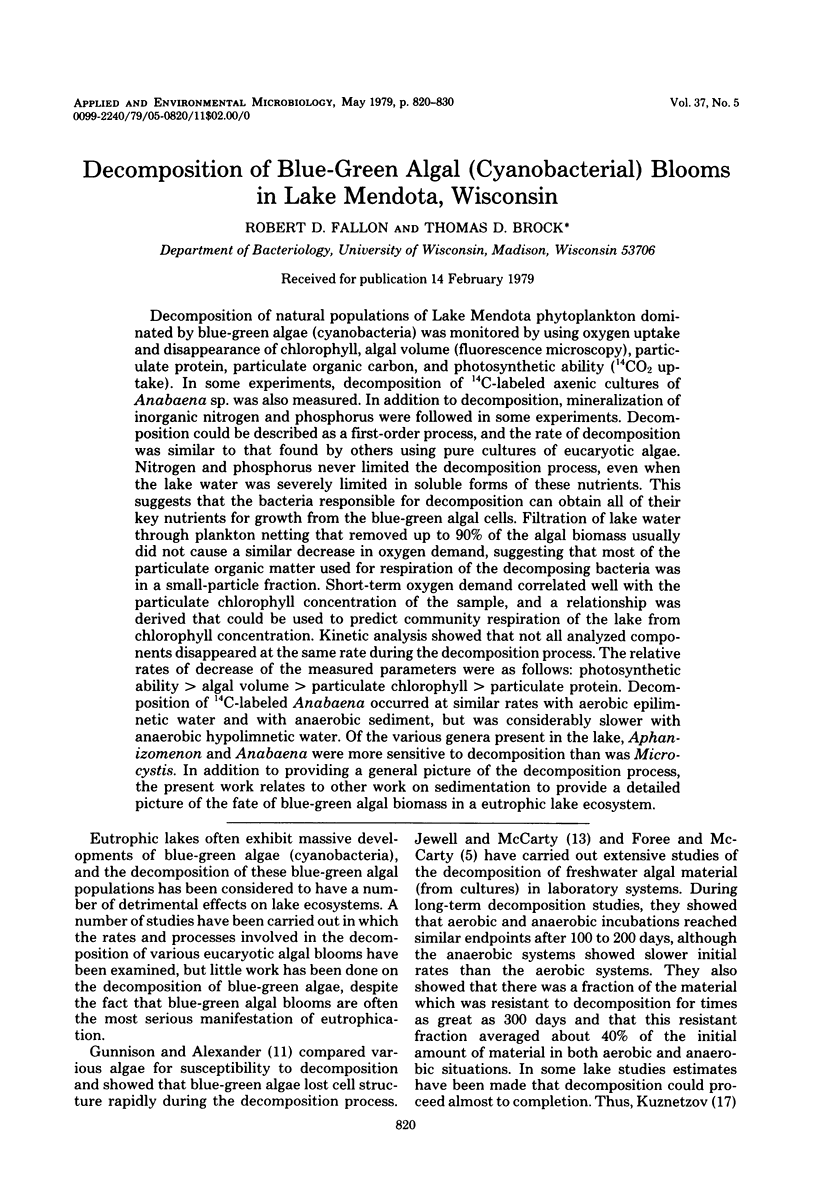
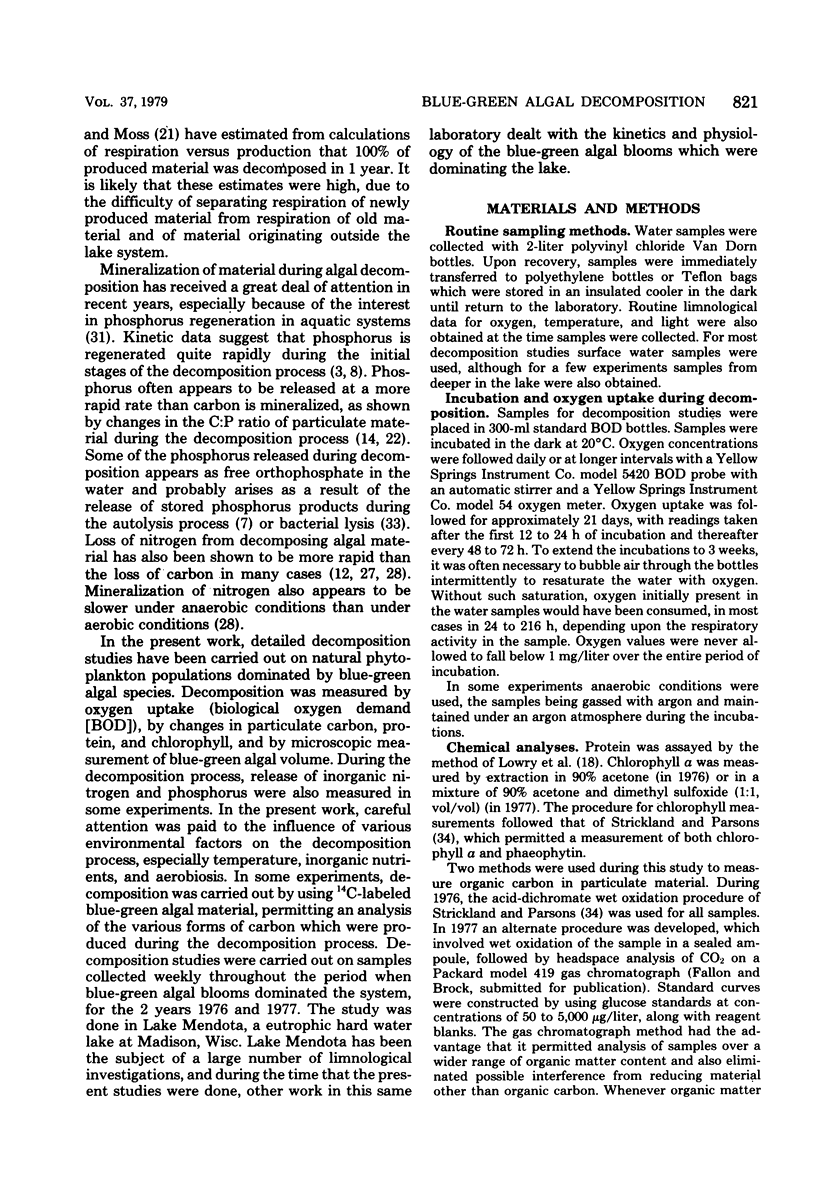
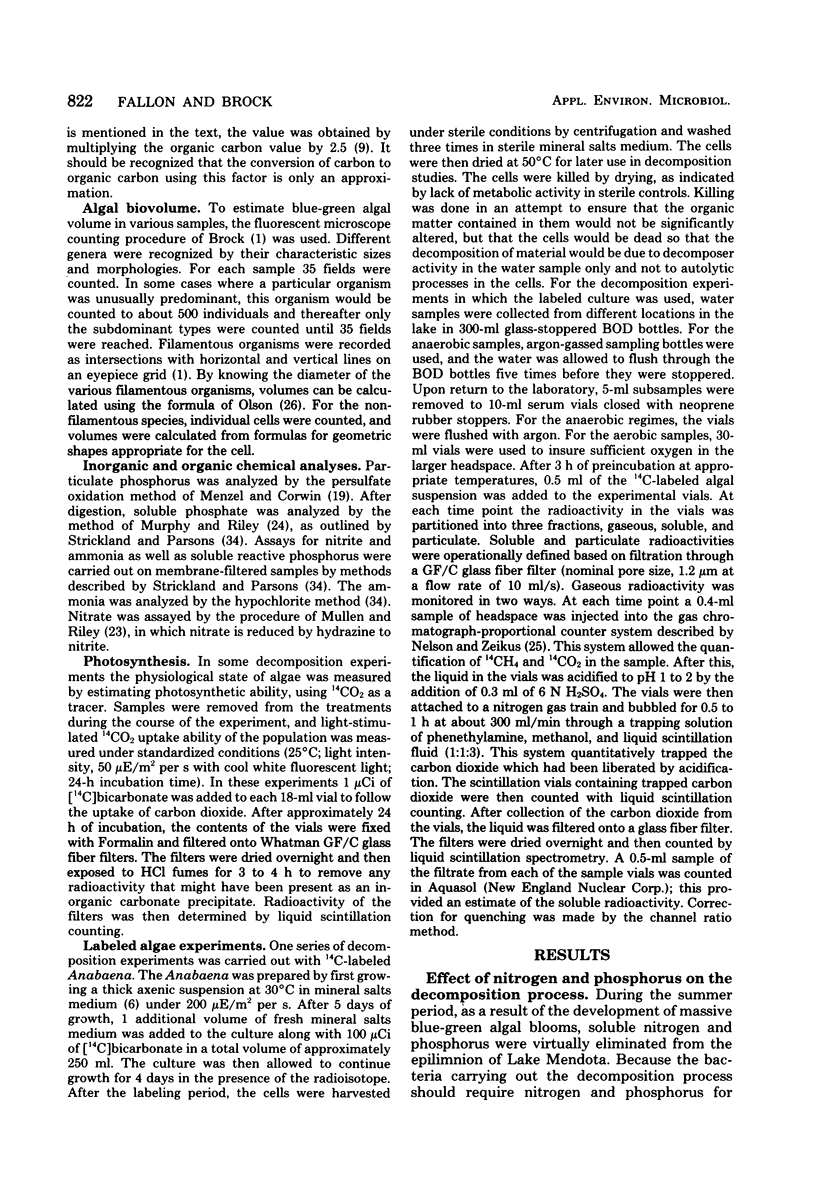
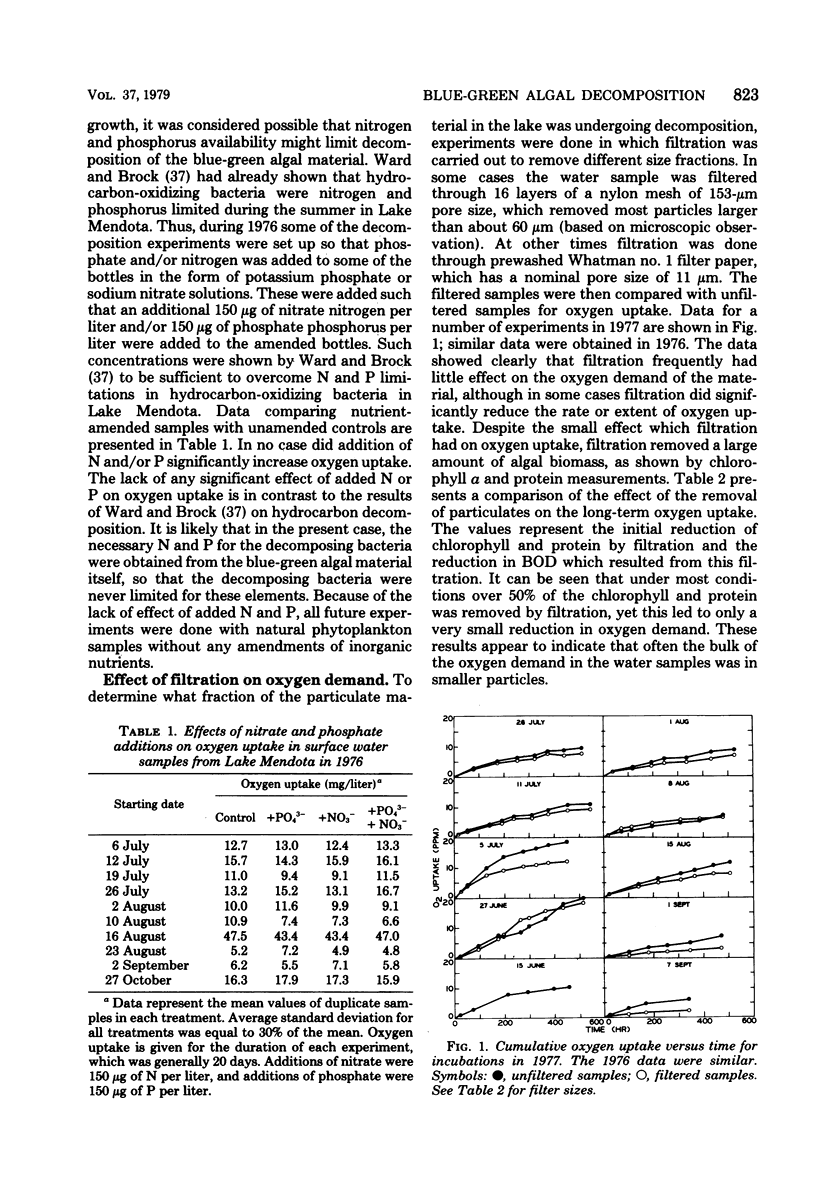
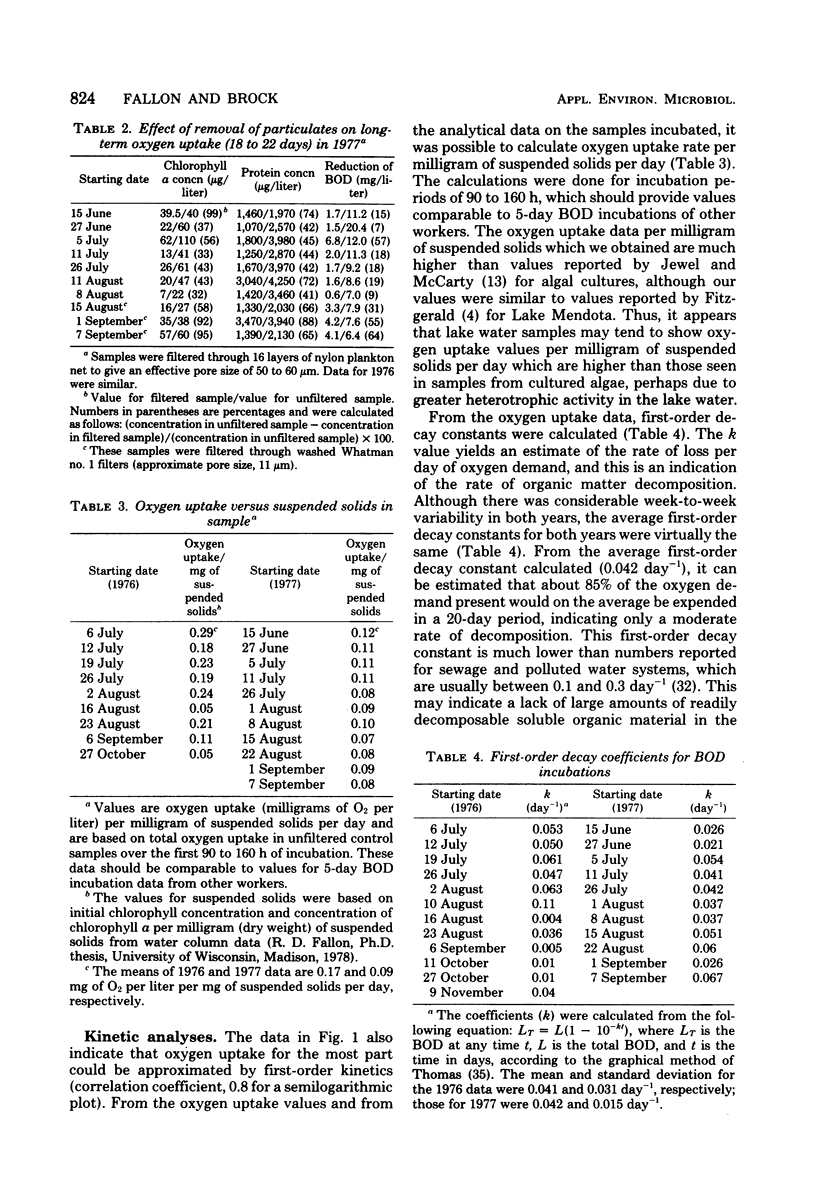
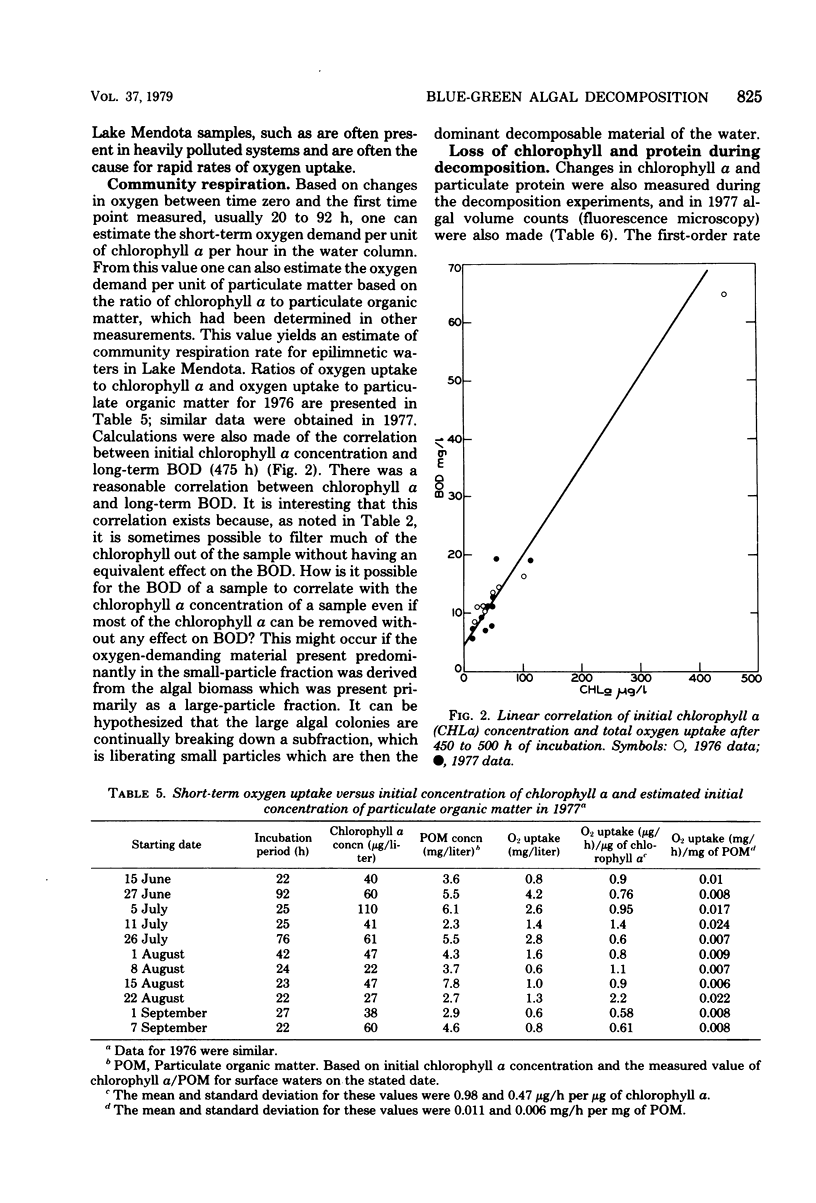
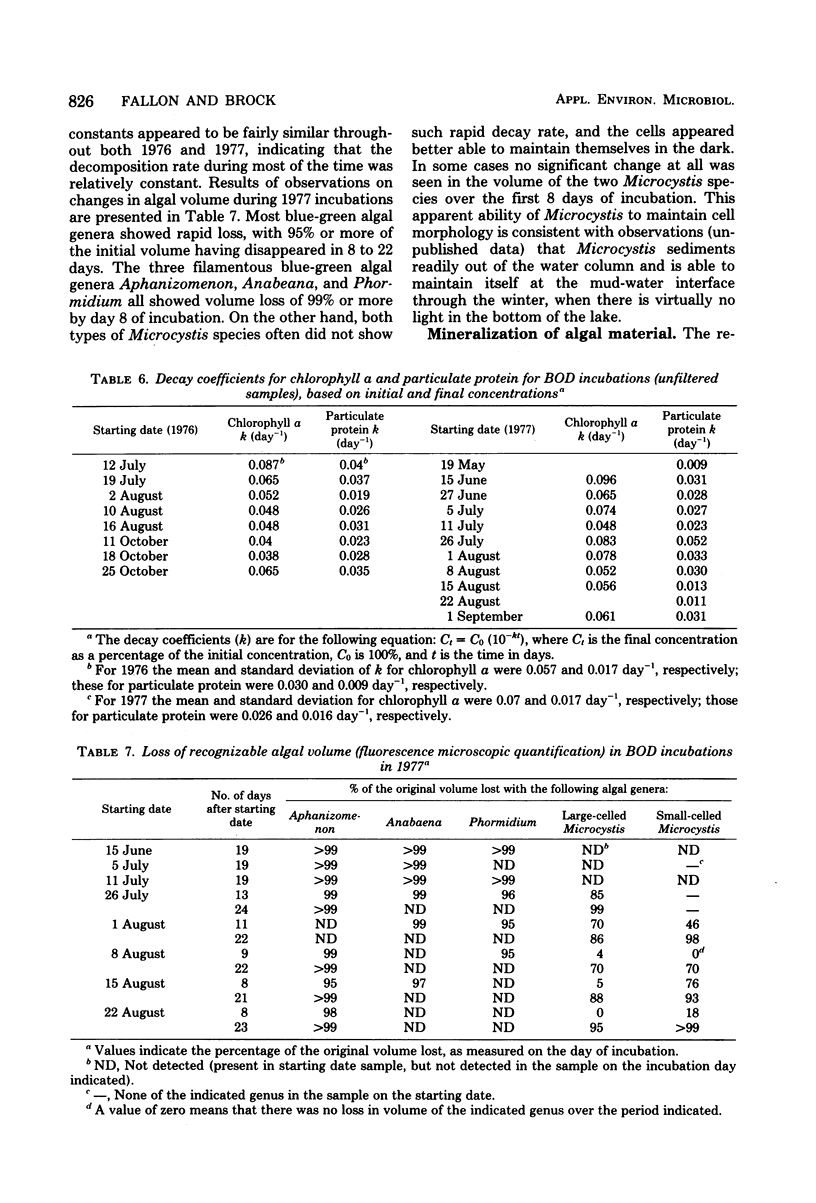
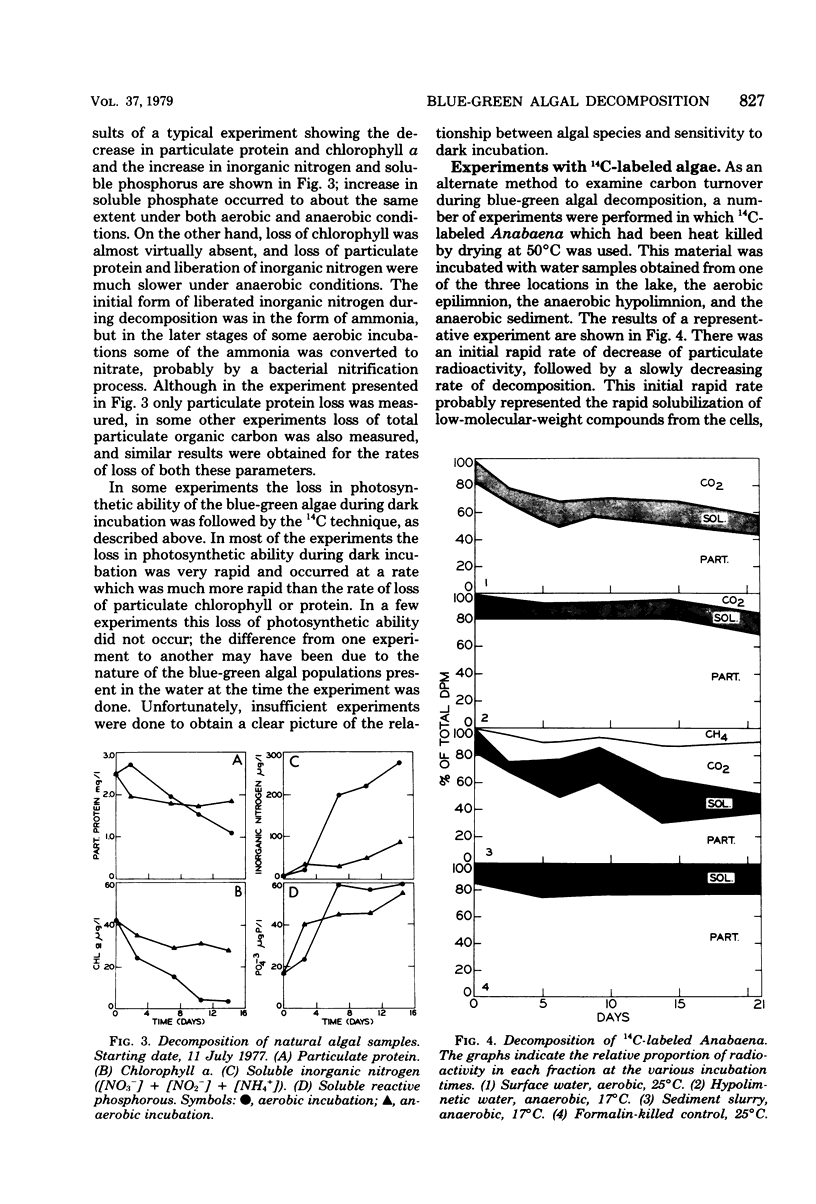
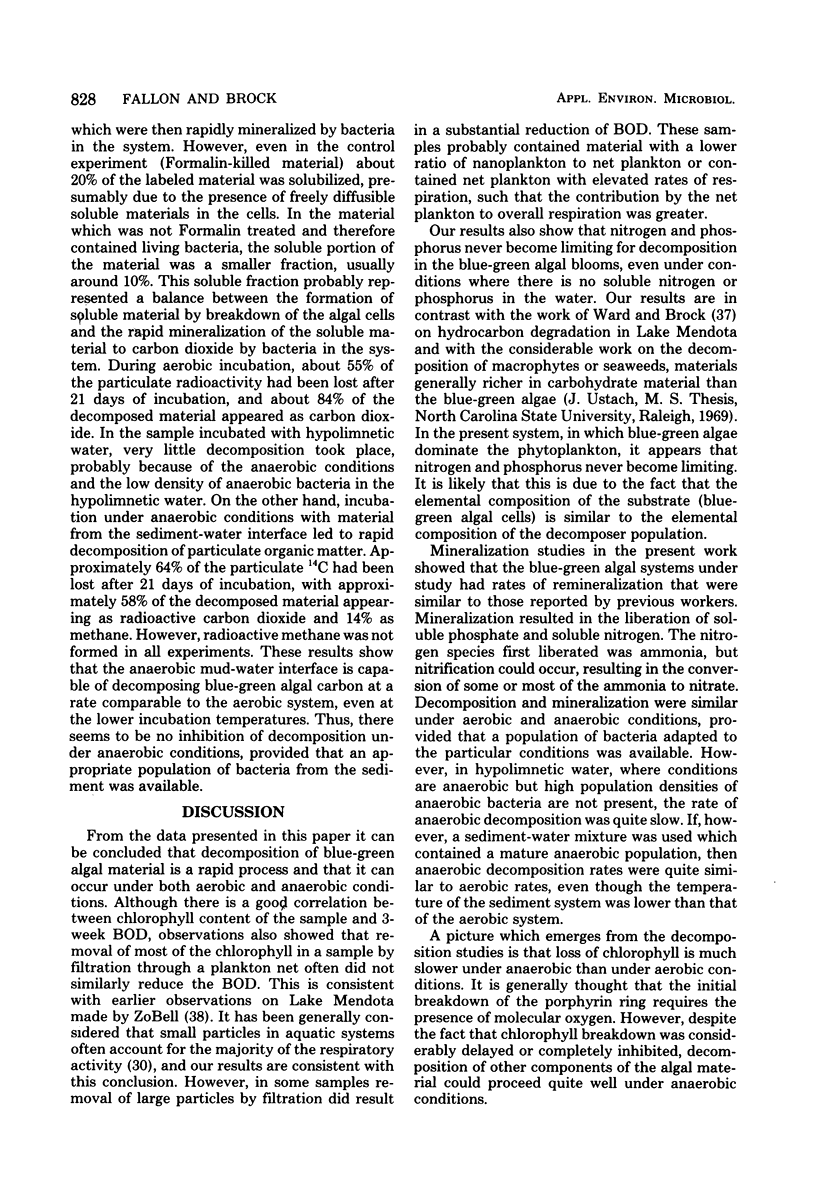
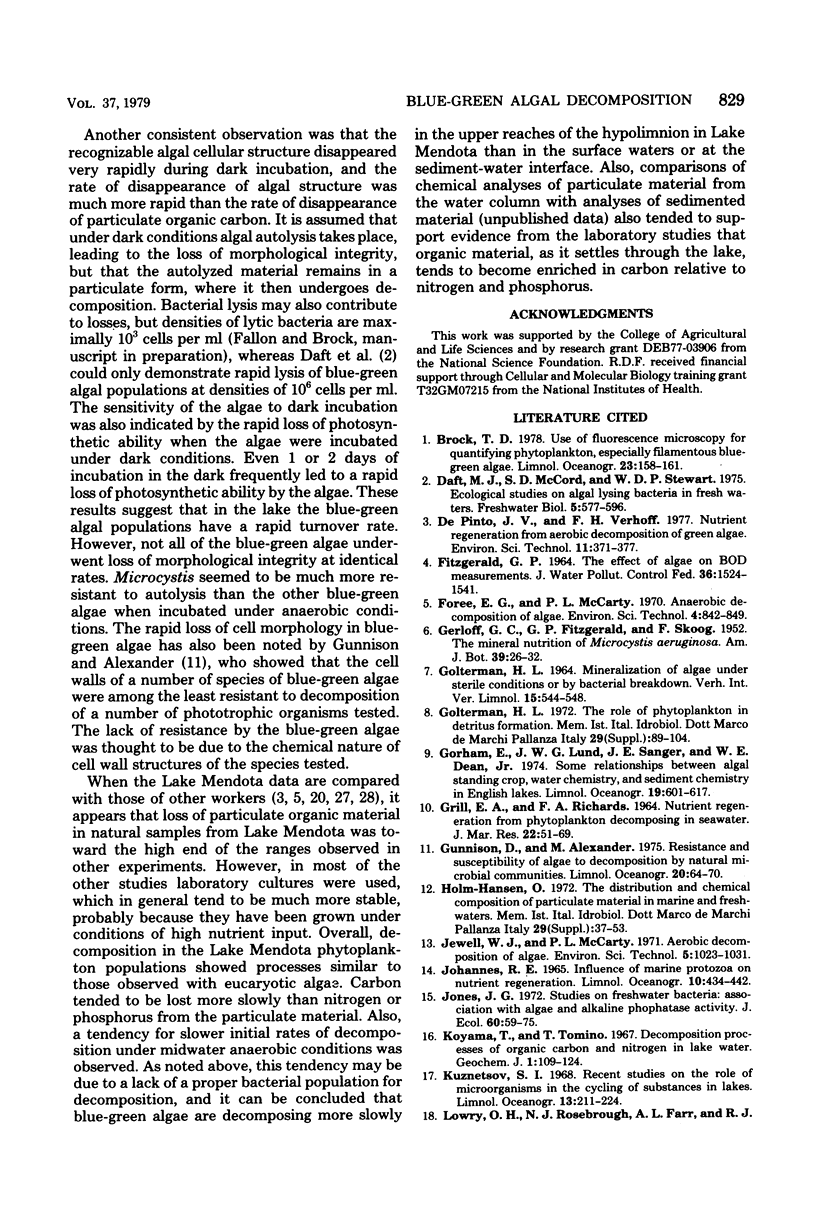
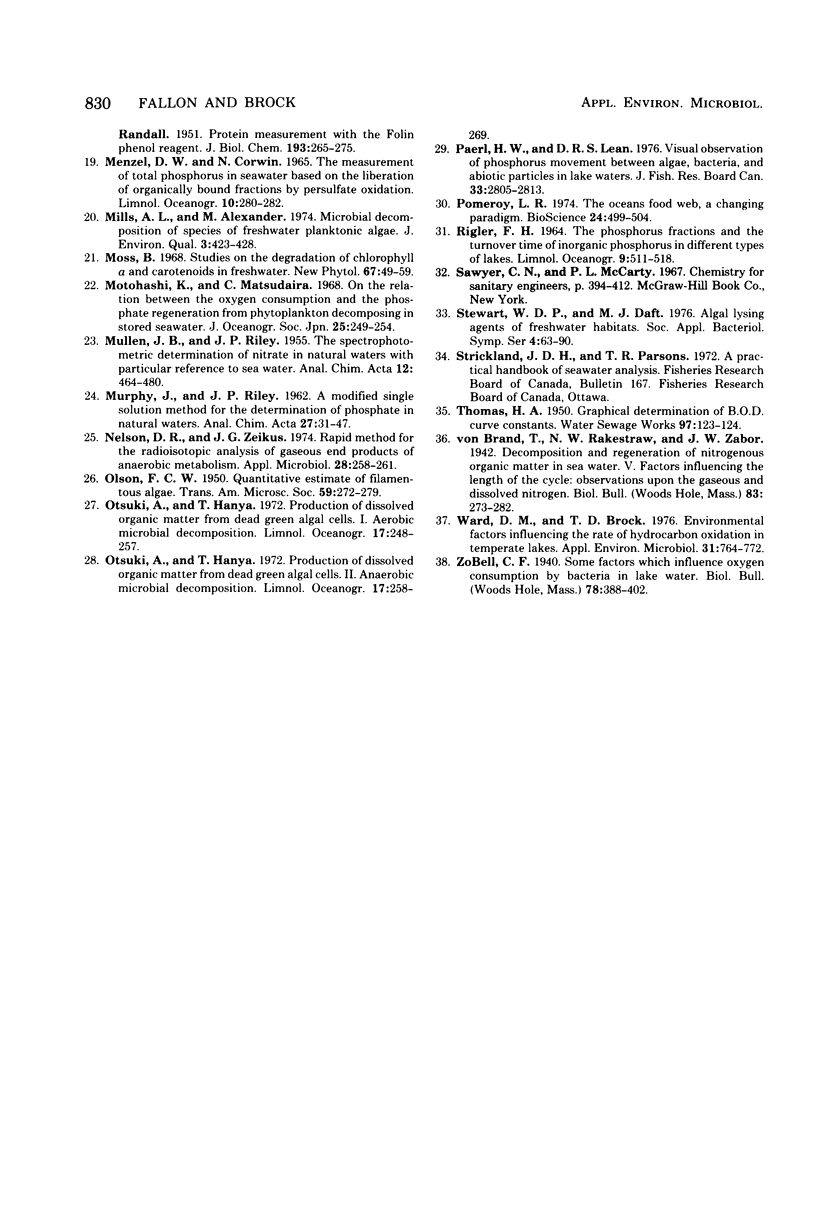
Selected References
These references are in PubMed. This may not be the complete list of references from this article.
- LOWRY O. H., ROSEBROUGH N. J., FARR A. L., RANDALL R. J. Protein measurement with the Folin phenol reagent. J Biol Chem. 1951 Nov;193(1):265–275. [PubMed] [Google Scholar]
- Nelson D. R., Zeikus J. G. Rapid method for the radioisotopic analysis of gaseous end products of anaerobic metabolism. Appl Microbiol. 1974 Aug;28(2):258–261. doi: 10.1128/am.28.2.258-261.1974. [DOI] [PMC free article] [PubMed] [Google Scholar]
- Ward D. M., Brock T. D. Environmental factors influencing the rate of hydrocarbon oxidation in temperate lakes. Appl Environ Microbiol. 1976 May;31(5):764–772. doi: 10.1128/aem.31.5.764-772.1976. [DOI] [PMC free article] [PubMed] [Google Scholar]


